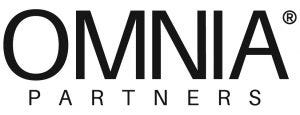
Omnia Partners
Purification technology can help local governments improve air quality and shrink carbon footprintPurification technology can help local governments improve air quality and shrink carbon footprint
No question, cities and counties continue to seek good air purification and environmental solutions, says Tony Abate, vice president and chief technology officer at AtmosAir Solutions, a Fairfield, Conn.-based indoor purification company.
February 21, 2023

No question, cities and counties continue to seek good air purification and environmental solutions, says Tony Abate, vice president and chief technology officer at AtmosAir Solutions, a Fairfield, Conn.-based indoor purification company.
“The pandemic showed us how pathogens are spread through airspaces, and that has raised concern since health affects local economies as well as students in schools. We saw education, for example, put on hold during the pandemic. These children lost valuable time, and we can use AtmosAir solutions to monitor air quality and provide assurance that spaces are free of airborne contaminants. It may not be perfect, but we can approach this with a percentage of surety based on figures we have from third party validation,” Abate tells Co-op Solutions.
Abate’s firm offers the Bi-Polar Ionization (BPI) air purification system. It provides continuous monitoring as well as real-time air quality information on carbon dioxide levels. The system measures indoor vs. outdoor air, particle counts and total organic compounds, which are also known as TVOCs. “We discovered before and especially during the pandemic that pathogens can be spread throughout airspaces. Bi-polar ionization is applied to adhere to these particles and successfully remove their presence from breathable air,” Abate explains. His firm provides proactive and continuous clean air in large facilities such as stadiums and other infrastructure. One example is the Empire State Building. He adds that his firm’s process can be expanded through an easy city-wide installation. Government is one of the markets that AtmosAir Solutions serves.
Local governments can benefit from his firm’s solutions, Abate says. “We help buildings comply with LEED certifications in energy efficiency as well as providing a solution to diminish the effects of pollution coming from outside air. BPI does not rely on energy inefficiencies required by filtration and HVAC systems that are constantly circulating air. Also, because the indoor air is cleaner, a building can recirculate more of this air that has already been conditioned to comfort, rather than bring in unconditioned outdoor air.”
Abate adds that AtmosAir BPI can help cities achieve their decarbonization goals covering a city’s whole building footprint. “We have documented energy savings in stadiums and other buildings and these figures factor into reducing the carbon footprint. AtmosAir requires less energy than traditional HVAC methods and enables code-compliant ventilation strategies than can save significant HVAC energy.” He adds that HVAC is any building’s No. 1 consumer of energy.
The AtmosAir BPI setup can help reduce energy costs as much as 25 percent in city-county offices, while helping the public sector attain sustainability, according to the company. It can clean and recycle indoor air proactively. After installation, there is no need to bring in outside air which may not actually be cleaner; sometimes it is dirtier, depending on the location of the building.
Abate notes that traditional filtration and ventilation will increase energy use and expense in two ways: “Classic filters restrict airflow because the air is harder to squeeze through them. HVAC fans work harder and use more power. The space takes longer to air-condition, so HVAC systems cycle more often and for longer durations using more energy.”
He explains that BPI systems clean air efficiently, so restrictive filters aren’t needed. “For the same reasons, ventilation can be reduced, especially outside air ventilation. The savings span across all types of building energy sources, including electric, gas, oil, chilled water and generated steam.”
The AtmosAir BPI assembly can be installed without replacing a building’s current heating and air conditioning setup. According to Abate, that is a key differentiator. “AtmosAir solutions can be installed through a retrofit process where building owners do not have to re-design their entire HVAC apparatus. These systems can be placed in an existing arrangement by following proper recommended installation and design recommendations.”
To improve air quality in local government facilities, Abate says building managers must make the invisible visible. “You would be surprised at the particles, micro-organisms, gaseous pollutants, allergens and other airborne entities that we breathe. The first action to take in the process is to install a system that provides active, real-time air quality monitoring to determine what’s in the air. After all, you can’t fix a problem if you don’t know what it is.”
He notes that pollution levels can vary in buildings depending on the activities that take place in those facilities. He adds that measurement results can be surprising. “From that vantage point, a strategy can be put in place, such as using BPI as part of the overall goal to provide a healthier environment for occupants in the building. That way, building systems do not have to totally rely on circulating air from the outside, which may or may not be helpful.”
For about two decades, AtmosAir has provided BPI air purification technologies globally. The firm has installed more than 7,500 building systems around the world. Abate explains: “Many state, city and county governments are making their buildings sustainable (and healthier) by upgrading their HVAC systems with bi-polar ionization technology from AtmosAir Solutions.”
Here are a few examples of governments that have invested in and installed BPI technology to help achieve decarbonization, sustainability and help offset climate change: state of Kansas; Lehigh County, Pa.; Dallas County and Hidalgo County, Texas; and Westchester County Airport in New York.
OMNIA Partners offers a complete portfolio of cooperative contracts in the public procurement space. This OMNIA Partners Public Sector site lists about eight vendors who participate in OMNIA Partners Public Sector cooperative contracts that include the keyword “indoor air quality.”
Michael Keating is senior editor for American City & County. Contact him at [email protected]
.jpg?width=100&auto=webp&quality=80&disable=upscale)
.jpg?width=400&auto=webp&quality=80&disable=upscale)







